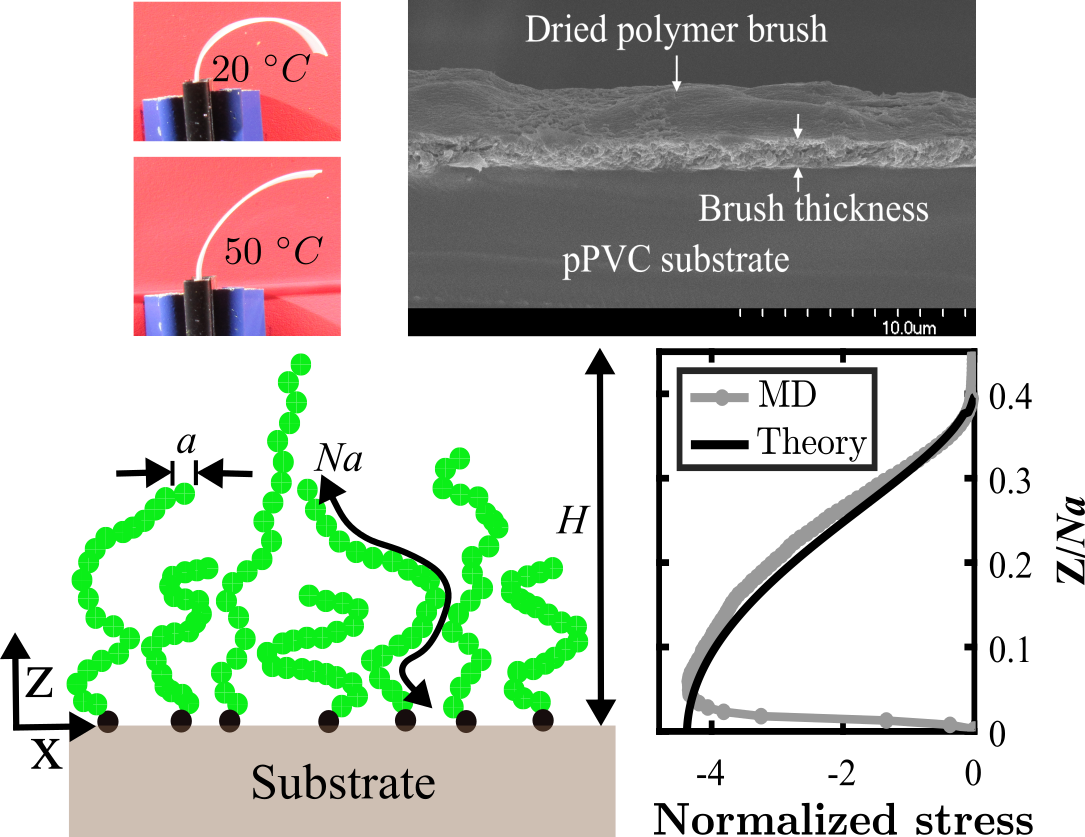Mechanics of a polymer brush
 Polymer brushes are soft active materials which form from dense tethering of polymer chains on a substrate. They provide a facile means of converting chemical energy into mechanical work at nanoscale, achieved through stimuli-induced conformation changes. Our research constituted pioneering work on the stress within a polymer brush. Our theoretical and computational work combined polymer physics theories with continuum mechanics to predict stress in a brush and its stimuli-response, and validated the results using molecular dynamics (MD) simulation. Our research has significant implications in the design of brush based nanoactuators and self-folding of 2D materials to generate 3D structures using brushes, and can contribute to our understanding of the bending of a biological membranes due to the disordered proteins on their surface.
Polymer brushes are soft active materials which form from dense tethering of polymer chains on a substrate. They provide a facile means of converting chemical energy into mechanical work at nanoscale, achieved through stimuli-induced conformation changes. Our research constituted pioneering work on the stress within a polymer brush. Our theoretical and computational work combined polymer physics theories with continuum mechanics to predict stress in a brush and its stimuli-response, and validated the results using molecular dynamics (MD) simulation. Our research has significant implications in the design of brush based nanoactuators and self-folding of 2D materials to generate 3D structures using brushes, and can contribute to our understanding of the bending of a biological membranes due to the disordered proteins on their surface.
[1] Manav, M., Anilkumar, P., & Phani, A. S. (2018). Mechanics of polymer brush based soft active materials–theory and experiments. Journal of the Mechanics and Physics of Solids, 121, 296-312.
[2] Manav, M., Ponga, M., & Phani, A. S. (2019). Stress in a polymer brush. Journal of the Mechanics and Physics of Solids, 127, 125-150.
[3] Manav, M., Ponga, M., & Phani, A. S. (2020). Stress in a stimuli-responsive polymer brush. Macromolecules, 54(1), 170-182.
